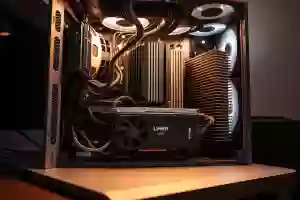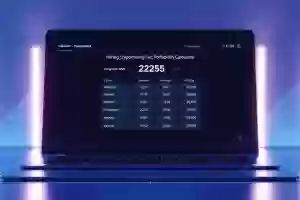Discover the Secrets of Solo Mining: Bitcoin, Cryptocurrency, and Beyond
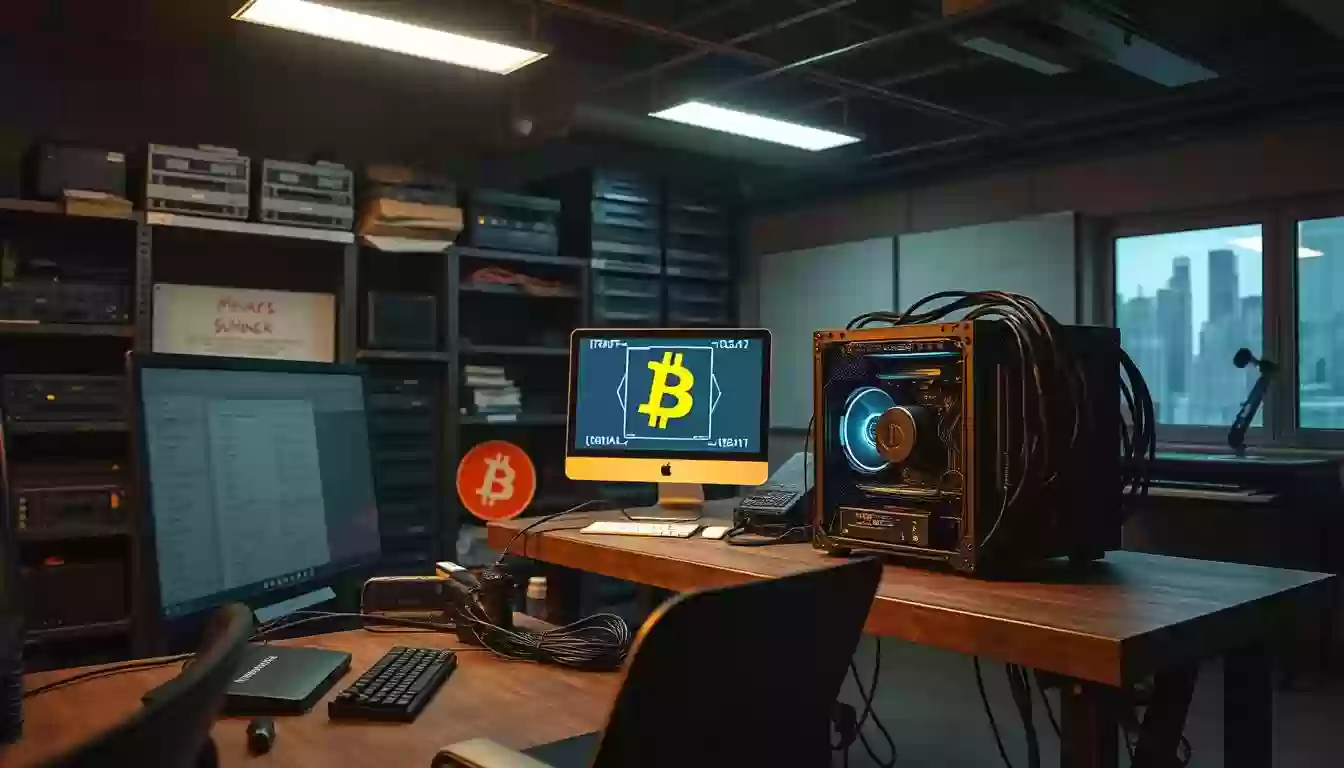 03 Mar 25
03 Mar 25
In recent years, the world of mining has seen a significant shift, with solo mining emerging as a popular choice for both novice and experienced miners. As Bitcoin valuations have surged past $100,000, according to reports from Cointelegraph and Crypto News Flash, the interest in independent mining operations has grown exponentially. This approach allows miners to claim the entire block reward without sharing it with pools, making it an attractive option for those seeking greater control and potential returns.
However, mining is not without its challenges. The difficulty of mining Bitcoin, for instance, has increased significantly, requiring more powerful hardware and higher energy consumption. Despite these hurdles, advancements in mining software and specialized ASIC devices have made solo mining more accessible than ever. For those willing to invest in the right equipment and understand the network dynamics, the rewards can be substantial.
This article aims to empower both curious newcomers and seasoned miners by exploring the intricacies of solo mining. We will delve into the benefits and risks, discuss the latest hardware trends, and provide insights into optimizing your mining operations. Whether you're drawn to the independence of solo mining or simply looking to enhance your current setup, this guide will offer valuable perspectives to help you make informed decisions.
Key Takeaways
- Solo mining offers full block rewards without pool fees, appealing to independent miners.
- Bitcoin mining difficulty and energy requirements have increased, necessitating advanced hardware.
- Investing in efficient ASIC devices and mining software can enhance your mining operations.
- The resurgence of solo mining aligns with growing Bitcoin valuations and market excitement.
- Understanding network dynamics and staying updated on technological advancements is crucial for success.
- Solo mining presents both opportunities and challenges, requiring careful consideration of costs and risks.
Introduction to Solo Mining
As Bitcoin's value continues to rise, reaching over $100,000 according to Crypto News Flash, the appeal of solo mining has grown significantly. This method allows miners to operate independently, claiming the entire block reward without sharing it with pools. However, the journey isn't without its challenges.
The solo mining landscape is defined by miners taking on the network difficulty alone. Unlike pool mining, where resources are shared, solo mining requires significant hardware power and energy. This independence means higher potential rewards but also greater risks.
Understanding the Solo Mining Landscape
Pool mining offers lower barriers to entry but comes with fees. In contrast, solo mining provides full control and no fees, appealing to those willing to invest in robust setups. The mining pool model distributes rewards based on contributions, whereas solo miners rely on their individual success.
Why Solo Mining Matters in 2025
With Bitcoin's increasing value, solo mining's allure grows. The network difficulty has surged, demanding more powerful hardware. Despite these challenges, advancements in mining technology make solo mining more accessible. For those ready to invest, the potential benefits are substantial.
What is Solo Mining?
Solo mining is a method where an individual miner operates independently to validate transactions and add new blocks to a blockchain. Unlike pool mining, which involves shared resources, solo mining allows a single miner to claim the entire block reward. This approach requires significant hardware power and energy but offers the potential for substantial rewards.
Defining Solo Cryptocurrency Mining
Solo mining involves solving complex cryptographic puzzles to validate transactions and create new blocks. Miners use specialized hardware like ASICs, GPUs, or CPUs to perform these calculations. The process is independent, meaning the miner doesn't rely on a pool, and the reward is exclusive to them if they succeed.
Overview of the Mining Process
The mining process begins with setting up mining hardware and software. The miner connects to the blockchain network and begins solving cryptographic puzzles. When a miner successfully validates a block, they are rewarded with newly minted coins or transaction fees. This reward incentivizes miners to secure the network and process transactions.
https://www.youtube.com/watch?v=IXdDL6fWd9A
Examples from Cointelegraph and Bitdeer highlight successful solo mining operations. In one instance, a solo miner earned a block reward worth over $250,000. Such cases demonstrate the potential rewards of solo mining, despite the challenges of high energy consumption and hardware costs.
Advantages of Operating Independently
Operating independently in solo mining offers a range of benefits that can significantly enhance your mining experience and profitability. By managing your own mining operations, you gain full control over your setup and strategy, allowing for greater flexibility and potential returns.
Full Block Rewards and No Pool Fees
One of the most significant advantages of solo mining is the ability to claim the entire block reward and transaction fees without splitting them with a pool. This means that when you successfully validate a block, you receive the full reward, which can be substantial. For example, as highlighted by Cointelegraph, solo miners have earned block rewards worth over $250,000. Additionally, by avoiding pool fees, you retain more of your earnings, which can make a considerable difference in your overall profitability.
Without the constraints of pool mining, you have the freedom to optimize your mining operation for maximum performance. This independence allows you to fine-tune your hardware and software configurations to achieve the best possible results, ensuring that your mining operation runs efficiently and effectively.
Enhanced Control Over Mining Operations
Another key benefit of solo mining is the enhanced control it provides over your mining operations. Unlike pool mining, where you have limited influence over the technical settings and strategies, solo mining puts you in the driver's seat. You can adjust your hardware configurations, choose the most profitable blocks to mine, and implement custom mining strategies that align with your goals and resources.
This level of control also extends to energy and cost management. By optimizing your energy consumption and reducing operational costs, you can maximize your returns and ensure that your mining operation remains profitable. Moreover, with the ability to monitor and manage your performance in real-time, you can make data-driven decisions to continuously improve your mining operation.
In summary, operating independently in solo mining offers numerous advantages, from full block rewards and no pool fees to enhanced control over your mining operations. While the challenges of solo mining are undeniable, the potential benefits make it a compelling choice for miners who are willing to invest in the right hardware and strategies.
Step-by-Step Guide to Start Solo Mining
Starting your solo mining journey can seem daunting, but breaking it down into manageable steps makes it achievable. This guide will walk you through the process, ensuring you're well-prepared for the challenges and opportunities ahead.
Choosing the Right Cryptocurrency
Selecting a cryptocurrency that aligns with your resources is crucial. Consider the network difficulty and block reward structure. For example, Bitcoin requires significant computational power, while smaller coins may offer easier entry points. Research the cryptocurrency's market trends and community support to make an informed decision.
Setting Up Your Mining Environment
Begin by selecting a suitable location for your mining setup. Ensure good ventilation and a stable power supply. Next, choose your hardware, ASICs are ideal for efficiency, while GPUs offer flexibility. Install reliable mining software like CGminer or BFGminer, and set up a secure wallet to store your rewards.
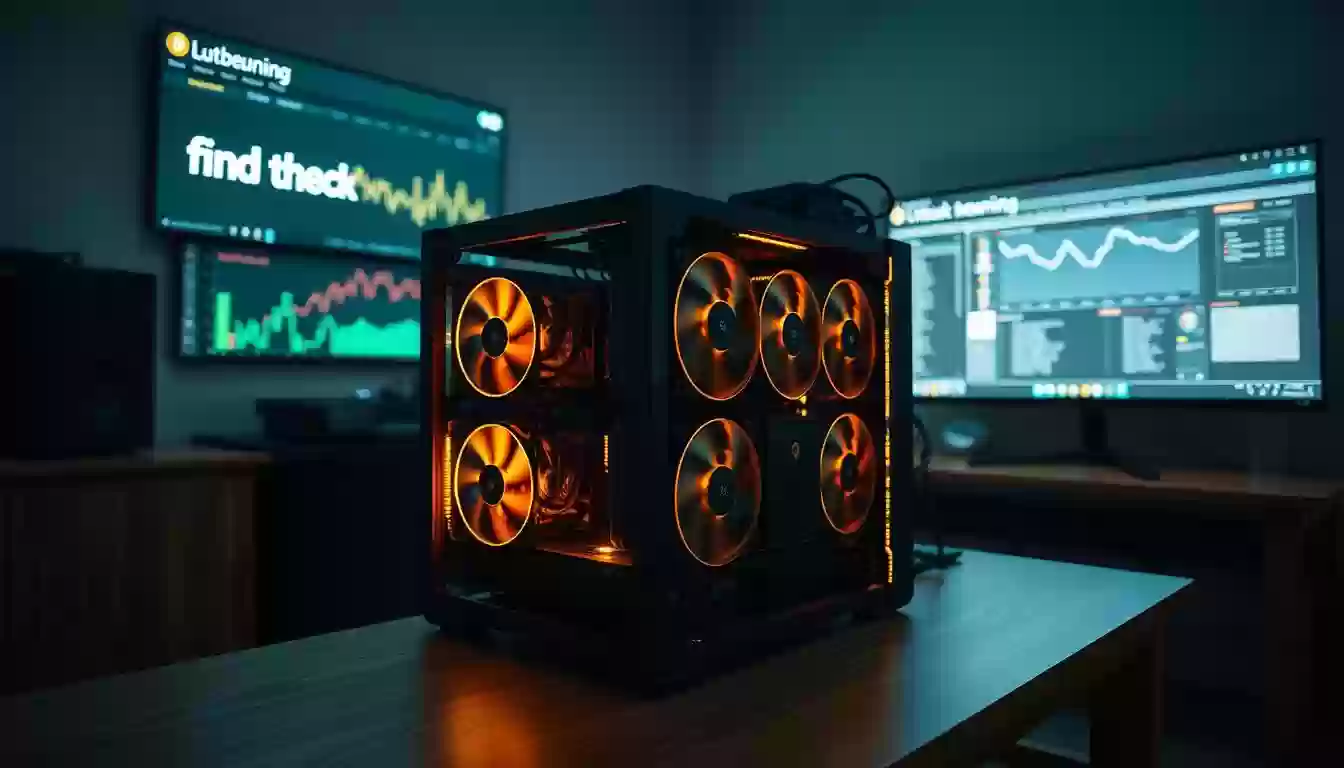
Configuring Your Mining Operation
Download and install the necessary mining software, ensuring it's compatible with your hardware. Configure your settings to connect to the blockchain network. Set up automatic updates to keep your software current and optimize energy use to maximize efficiency.
Monitoring and Maintenance
Regularly monitor your mining performance using tools like CGwatch or Mining Monitor. Keep an eye on hash rates and system temperatures. Address any issues promptly to maintain optimal performance and prevent downtime.
By following these steps, you can establish a successful solo mining operation. Stay informed about market trends and continuously improve your setup to enhance your mining experience.
Essential Mining Hardware and Software Setup
Setting up the right hardware and software is crucial for successful solo mining. The choice of equipment directly impacts your performance, energy consumption, and overall profitability.
Selecting ASICs, GPUs, and Other Equipment
ASICs (Application-Specific Integrated Circuits) are the most efficient choice for mining, offering high hash rates with lower power consumption. For example, the Bitmain Antminer S21 Pro delivers a hash rate of 234 TH/s while consuming 3,510W of power. GPUs, such as the MicroBT Whatsminer M66S, are also popular, especially in regions with cheaper electricity.
Installing and Updating Mining Software
Mining software like CGminer or BFGminer is essential for connecting your hardware to the blockchain. Regular updates ensure optimal performance and energy efficiency. For instance, upgrading software can reduce energy consumption by up to 15%, as seen in Texas where miners saved 12% on their bills.
By investing in energy-efficient hardware and keeping software updated, you can maximize your mining operation's performance and profitability.
Network Configuration and Daily Maintenance
Proper network setup and regular maintenance are vital for smooth mining operations. A stable connection ensures minimal latency and optimal performance, which are crucial for success in today's competitive mining landscape.
Optimizing Connectivity and Reducing Latency
A reliable network connection is essential for maintaining consistent mining performance. Start by configuring your network to minimize latency, which can significantly impact your operation's efficiency. Use high-quality Ethernet cables and ensure your router is capable of handling high data transfer rates. Additionally, consider implementing Quality of Service (QoS) settings to prioritize mining traffic over other network activities.
Performance Monitoring Techniques
Regular monitoring of your mining operation is crucial for identifying and addressing potential issues before they escalate. Use monitoring tools to track key metrics such as hash rate, temperature, and power consumption. These tools can help you optimize your setup and ensure that your hardware is running efficiently. For example, if you notice a drop in hash rate, it could indicate an issue with your hardware or software that needs attention.
| Metric | Optimal Range | Impact on Mining |
|---|---|---|
| Hash Rate | 70 TH/s and above | Higher hash rates increase the chances of solving blocks faster. |
| Temperature | Below 60°C | Excessive heat can damage hardware and reduce performance. |
| Power Consumption | 3,000W and below | Lower power consumption improves energy efficiency and profitability. |
Regular software updates are also important to ensure that your mining operation runs smoothly. Outdated software can lead to compatibility issues and reduced performance, so make sure to check for updates regularly. Additionally, keep an eye on network difficulty and transaction rates, as these can impact your mining success.
By following these best practices, you can maintain a stable and efficient mining operation. Remember, a well-configured network and regular maintenance are key to achieving consistent results and minimizing downtime.
Analyzing Profitability and Cost Factors
Understanding the financial aspects of solo mining is crucial for maximizing returns and ensuring long-term profitability. This section delves into the key factors that influence profitability, including energy consumption, hardware performance, and market dynamics.
Calculating Energy Consumption and ROI
Energy costs are a significant expense in solo mining. To calculate your ROI, consider your hardware's energy efficiency and electricity costs. For example, if your miner consumes 3,000W and electricity costs $0.13 per kWh, your daily energy cost is approximately $9.72.
Using data from Crypto News Flash, a miner with a hash rate of 70 TH/s in a network with a block reward of 3.125 BTC can estimate their ROI. If the miner successfully validates a block, they could earn over $150,000, as seen in recent examples.
| Metric | Optimal Range | Impact on Mining |
|---|---|---|
| Hash Rate | 70 TH/s and above | Higher hash rates increase block-solving chances. |
| Temperature | Below 60°C | Excessive heat can damage hardware and reduce performance. |
| Power Consumption | 3,000W and below | Lower consumption improves energy efficiency and profitability. |
Assessing Market Conditions
Market conditions, such as cryptocurrency prices and network competition, play a vital role in profitability. A higher block reward or increased transaction rates can significantly boost returns. However, rising network difficulty requires more powerful hardware, which can be a challenge for solo miners.
Comparing solo mining to pool mining, solo mining offers higher potential returns but comes with greater risks, such as longer periods without rewards. Pool mining provides more consistent income but involves sharing rewards and paying fees.
To optimize your strategy, consider your resources and risk tolerance. Staying informed about market trends and adjusting your approach can help you navigate the competitive landscape and enhance your mining operation's success.
Risks, Challenges, and Resource Management
Solo mining offers attractive rewards, but it also comes with significant challenges that every miner should understand. From network difficulty to technical risks, navigating these obstacles requires careful planning and adaptability.
Understanding Network Difficulty and Competition
One of the primary challenges in solo mining is the increasing network difficulty. As more miners join the network, the competition intensifies, making it harder to solve blocks independently. For instance, the odds of a modestly powered solo miner solving a Bitcoin hash were approximately 1 in 26.9 million in January 2023, as reported by Cointelegraph. This difficulty directly impacts profitability, as solo miners may experience long periods without rewards compared to mining pools, which offer more consistent, albeit shared, returns.
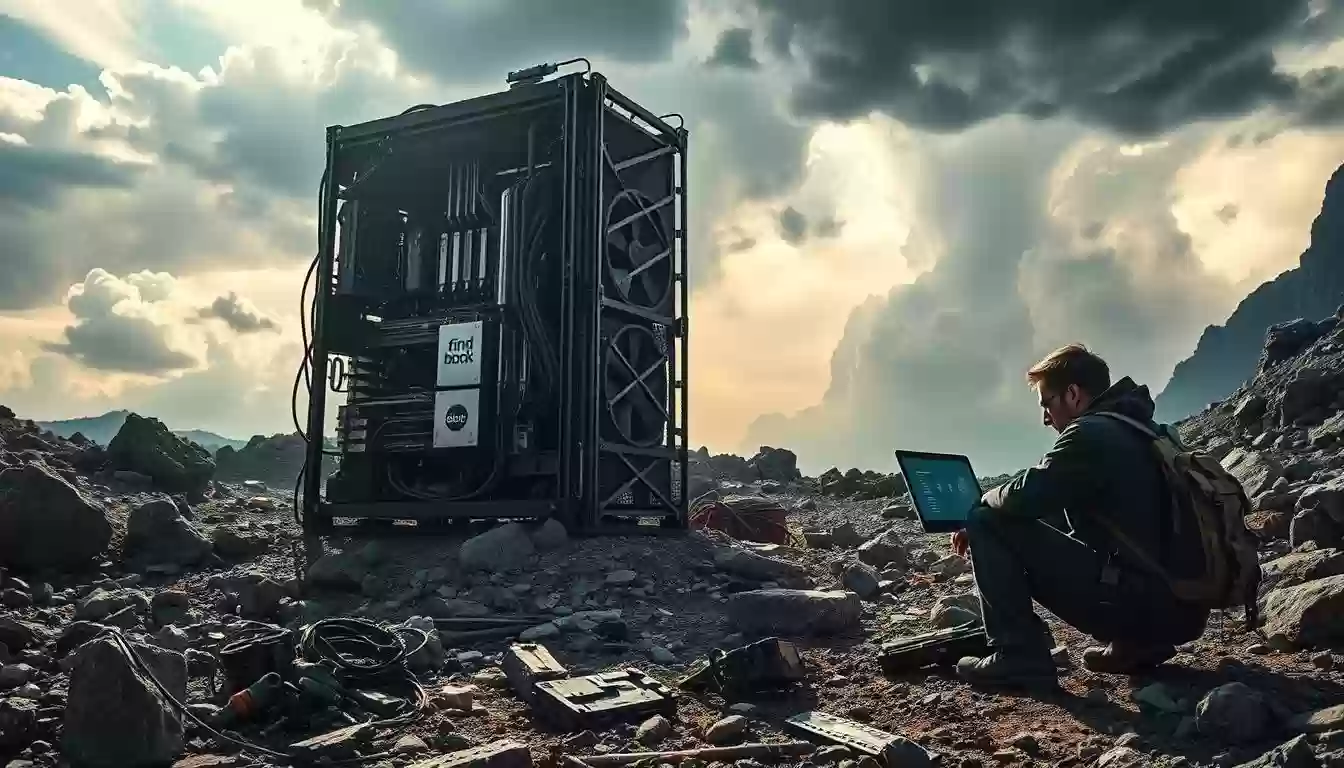
Managing Expenses and Technical Risks
Beyond network challenges, solo miners face significant expenses and technical risks. The high upfront cost of specialized hardware, such as ASICs, can be a barrier. Additionally, energy consumption remains a critical factor, with solo miners often facing higher electricity costs than larger mining operations that benefit from economies of scale. Regular monitoring of power consumption and system temperatures is essential to prevent hardware damage and optimize performance.
Technical risks also include software issues and outdated firmware, which can hinder performance. Staying updated with the latest mining software and using monitoring tools like CGwatch can help mitigate these risks. For example, regular updates can reduce energy consumption by up to 15%, as seen in Texas where miners saved 12% on their bills.
In conclusion, while solo mining presents opportunities, it also demands a keen understanding of its challenges. By managing resources effectively and staying vigilant about technical risks, miners can enhance their chances of success in this competitive landscape.
Mastering cryptocurrency, bitcoin solo mining, solo mining crypto: Tips and Tactics
To succeed in solo mining, adaptability and continuous learning are key. As the market evolves, staying ahead requires a blend of proven strategies and innovative approaches.
Diversifying Your Mining Strategy
Diversification can enhance your mining operation's resilience and profitability. Consider combining solo mining with pool mining during challenging periods. This balanced approach allows you to mitigate risks while still pursuing solo mining's rewards. For instance, allocating 70% of your resources to solo mining and 30% to pool mining can provide stability without sacrificing potential gains.
Staying Updated with Market Trends
Market dynamics play a crucial role in mining success. Keep an eye on cryptocurrency prices, network difficulty, and technological advancements. For example, updates in mining software can boost efficiency by up to 15%, as seen in Texas where miners reduced energy consumption by 12%.
| Metric | Optimal Range | Impact on Mining |
|---|---|---|
| Hash Rate | 70 TH/s and above | Higher hash rates increase block-solving chances. |
| Temperature | Below 60°C | Excessive heat can damage hardware and reduce performance. |
| Power Consumption | 3,000W and below | Lower consumption improves energy efficiency and profitability. |
By diversifying your strategy and staying informed, you can navigate the competitive mining landscape effectively, ensuring long-term success in your operations.
Emerging Trends in Cryptocurrency Mining for 2025
As we step into 2025, the world of mining is undergoing a transformative shift, driven by technological innovations and a growing emphasis on sustainability. These trends are reshaping how miners operate, making mining more efficient and environmentally friendly.
Innovations in Mining Technology
Recent advancements in mining hardware have significantly improved energy efficiency. For instance, next-generation ASICs now offer higher hash rates while consuming less power. Companies like Bitmain and MicroBT are at the forefront, developing hardware that minimizes energy usage without compromising performance.
Software updates are also playing a crucial role. Enhanced mining protocols and firmware improvements are enabling better performance monitoring and energy management. These updates help miners optimize their operations, reducing costs and downtime.
Sustainable and Energy-Efficient Practices
The mining industry is increasingly adopting renewable energy sources. Solar, wind, and hydroelectric power are becoming popular choices, reducing reliance on fossil fuels. This shift not only lowers energy costs but also minimizes environmental impact.
Major mining operations are leading the way in sustainability. For example, Greenidge Generation has successfully integrated renewable energy into their mining processes, setting a benchmark for others to follow.
As the industry evolves, staying informed about these trends is essential. By embracing innovation and sustainability, miners can enhance their operations and contribute positively to the environment.
Conclusion
In conclusion, solo mining offers a unique opportunity for miners seeking independence and full block rewards. By investing in the right hardware and optimizing software, miners can enhance their operations and potentially achieve substantial returns. However, this method comes with challenges such as high energy costs and significant risks. Proper network configuration and regular performance monitoring are essential for success. As highlighted by industry sources like Bitdeer and Cointelegraph, staying updated on market trends and technological advancements can significantly improve mining outcomes. While the rewards are attractive, careful planning and a clear understanding of the risks involved are crucial. For those willing to invest time and resources, solo mining remains a viable and rewarding strategy in the evolving landscape of digital asset transactions.
FAQ
What is solo mining?
Solo mining is a method where a single miner operates independently to validate transactions and find new blocks in a blockchain network. Unlike pool mining, where resources are shared, solo mining relies on individual hardware and software to solve complex mathematical problems and earn rewards.
What are the advantages of solo mining?
The main advantage is that solo miners receive the full block reward without sharing it with a pool. Additionally, solo mining offers greater control over the mining process, allowing for personalized optimization of hardware and software.
What hardware do I need for solo mining?
You typically need specialized mining equipment like ASICs (Application-Specific Integrated Circuits) or high-performance GPUs. The choice depends on the cryptocurrency you're mining and the network's difficulty level.
How do I set up mining software?
Mining software is essential for connecting your hardware to the blockchain network. Popular options include CGminer and BFGminer. Setup involves downloading the software, configuring it with your wallet address, and selecting the right mining pool or solo mining parameters.
What is network difficulty?
Network difficulty refers to the complexity of the mathematical problems miners must solve to find a block. Higher difficulty means it's harder to find a block, which can lower the chances of success for solo miners.
Is solo mining profitable?
Profitability depends on factors like electricity costs, hardware efficiency, and network difficulty. Solo mining can be profitable if you have high-performance hardware and low operational costs, but it's generally riskier than pool mining due to lower success rates.
What are the risks of solo mining?
Risks include high energy consumption, the need for significant initial investment in hardware, and the possibility of prolonged periods without finding a block. Additionally, network difficulty can increase, reducing your chances of success.
How does solo mining differ from pool mining?
In solo mining, you work alone, keeping the entire reward if successful. Pool mining combines resources with other miners, sharing both the work and the rewards. Pool mining offers more consistent returns but lower potential rewards compared to solo mining.
What is the role of transaction fees in mining?
Transaction fees are payments made by users to prioritize their transactions. Miners can collect these fees as part of their reward for validating transactions and finding new blocks, adding to their overall earnings.
How do I monitor my mining performance?
Use monitoring software to track metrics like hash rate, power consumption, and temperature. Regular checks ensure your setup is running efficiently and effectively, helping you optimize performance over time.
Can I mine multiple cryptocurrencies at once?
Yes, but it requires careful planning. Each cryptocurrency has different mining requirements, so you may need to switch between mining software or hardware configurations depending on the coin you're mining.
What is the importance of electricity in mining?
Electricity is a major cost factor in mining. High energy consumption can significantly reduce your profit margins, so it's crucial to use energy-efficient hardware and consider electricity costs when evaluating profitability.
How do I stay updated with the latest mining trends?
Follow industry news, join mining communities, and participate in forums. Staying informed helps you adapt to changes in network difficulty, new technologies, and shifting market conditions.
Source Links
- How To Mine Bitcoin: A Guide to Mining Cryptocurrencies | Gemini
- Coingy Mining: Uncovering the Secrets of Cryptocurrency Mining - FasterCapital
- How to Start Bitcoin Mining in 2023 A Step-by-step Guide - D-Central
- The Ultimate Guide to Solo Bitcoin Mining: What You Need to Know - D-Central
- Mining , Bitcoin
- What Is Solo Mining Bitcoin? - Unchained Crypto
- The unlikely triumph of a solo Bitcoin miner in 2024
- What is Solo Mining? Solo Bitcoin Mining - Paybis
- How To Mine Bitcoin?
- How can I start solo mining Bitcoin Core?
- How to Mine Bitcoin: The Complete Guide to Bitcoin Mining
- 12 Best Bitcoin Mining Software for Faster Mining and Seamless Scaling | BM Pro
- How to mine Bitcoin in 2025: Your ultimate beginner’s guide
- 8 Best Bitcoin Mining Machines 2025 (Expert Reviewed) | CoinLedger
- How To Mine Bitcoin: A Guide For Beginners in February 2025
- How to Mine Bitcoin: A Beginner's Guide for the Non-Technical - D-Central
- Solo Mining Bitcoin: Understanding the Basics and Its Mechanics
- Is Bitcoin Mining Profitable?
- Solo mining vs Pool Mining: 2023 profitability comparison
- Bitdeer’s Guide For Solo Mining In 2025
- Crypto Mining Pools: An Overview - Chainalysis
- Bitcoin Mining: What Is It And How Does It Work? | Bankrate
- How To Mine Cryptocurrency: Full Guide To Crypto Mining
- Cryptocurrency Mining Guide: Beyond Bitcoin
- Is Bitcoin Mining Still Profitable in 2025?
- Which cryptocurrencies are worth mining in 2025? Ranking of the best cryptocurrencies for mining! - Bitcoin Quark Exchange Office Chain
- Crypto You Can Mine From a Home Computer in 2025 - Brave New Coin
- Is Solo Mining More Effective Than Corporate Bitcoin Mining?
- Is There an Actual Chance for Solo Miners in the Bitcoin Landscape? - D-Central
















